Investing in a runaround: Second-hand vans compared
Thirsty farm pickups are now expensive to run, so it might pay to invest in a nippy two-wheel drive van for regular mud-free errands.
The choice is wide and the prices relatively low, as demonstrated in our round-up of the sub-£8,000 options.
See also: How Yomper 4×4 transforms Suzuki Jimnys into farm pickups
Ford Transit Connect
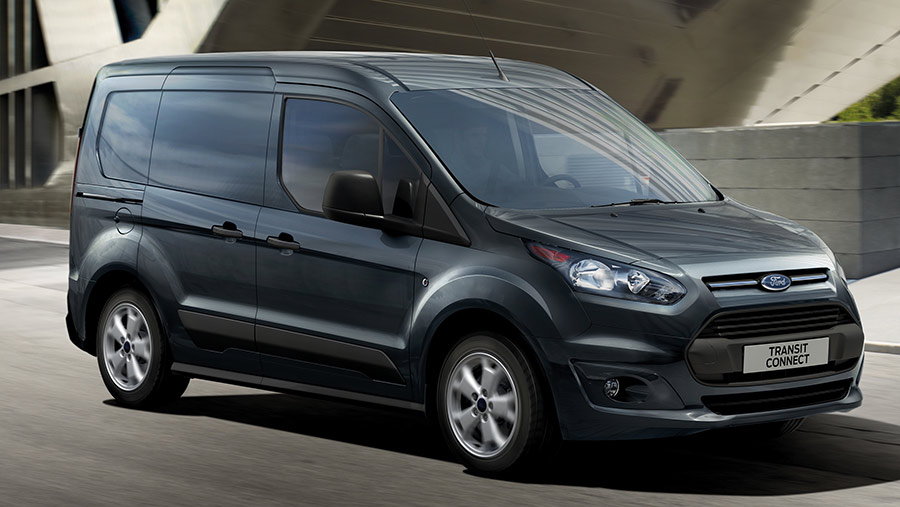
Ford Transit Connect © Ford
(2014-2018) £6,500-£8,000
First launched in 2003, the Transit Connect is now in its third generation.
For this guide, we’re sticking with the second-generation models, which ran from 2014 to 2018 and were available in two lengths – a short-wheelbase L1 or the longer L2.
These were far more modern than the original van and the interior was taken from a Fiesta, making it particularly car-like.
Of the three trim options – Base, Trend and Limited – only the latter came with air conditioning as standard.
It is powered by a 1.6-litre diesel engine producing 75hp, 95hp or 115hp. A 1-litre, 100hp EcoBoost petrol engine was available too, but wasn’t a big seller, so examples of this are now hard to find.
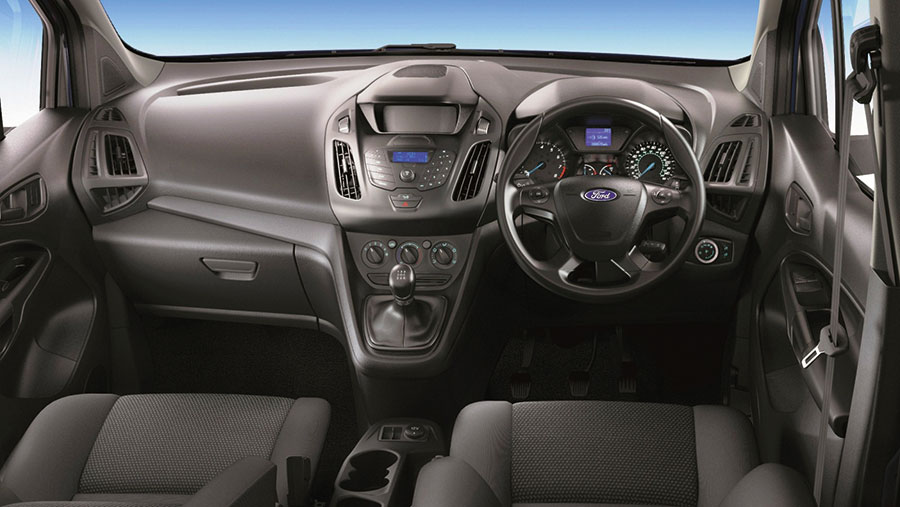
Ford Transit Connect interior © Ford
The popular 95hp engine has 230Nm of torque and is paired with a five-speed manual gearbox, and the 115hp version puts out 270Nm and gets a six-speeder.
Towing capacity for a braked trailer is up to 1,300kg.
Buyers could specify three front seats, in which case they could be folded down to increase the length of the load space.
There was also a crew-cab version that could carry five people – they are more difficult to find used, but can be cheaper.
Expect to pay close to £7,000 for a 2015 example with less than 90,000 miles; 2017 versions with about 125,000 miles come in at £7,500.
What to look for
Timing belt
Higher mileage examples can be good-value buys if they’ve been well looked after. This includes a new timing belt every 60,000 miles or four years, whichever comes first.
Clutch
There has been a recall for 2013-2018 Transit Connects for a clutch pressure plate issue – ask for evidence that it has been dealt with by Ford.
CV joint covers
Like most vehicles, the CV joint rubber boots are prone to wear. Any splits will allow water to get into the CV joint and eventually ruin it, though it’s a relatively easy fix.
Water
Check under the carpets and seats for evidence of leaks. Ensure the drainage holes around the windscreen are clear so water doesn’t collect.
Specifications
- Engine 1.6-litre TDCi diesel/1-litre EcoBoost petrol
- Power 75-115hp/100hp
- Torque 220-270Nm/170Nm
- Transmission Five- or six-speed manual
- Payload 579-865kg
- Towing capacity 1,300kg
Dimensions – L1/L2
- Exterior length 4,418mm/4,818mm
- Max load length 1,753mm/2,153mm
- Max load height 1,269mm
- Max load width 1,538mm
- Width between wheel arches 1,226mm
Renault Kangoo
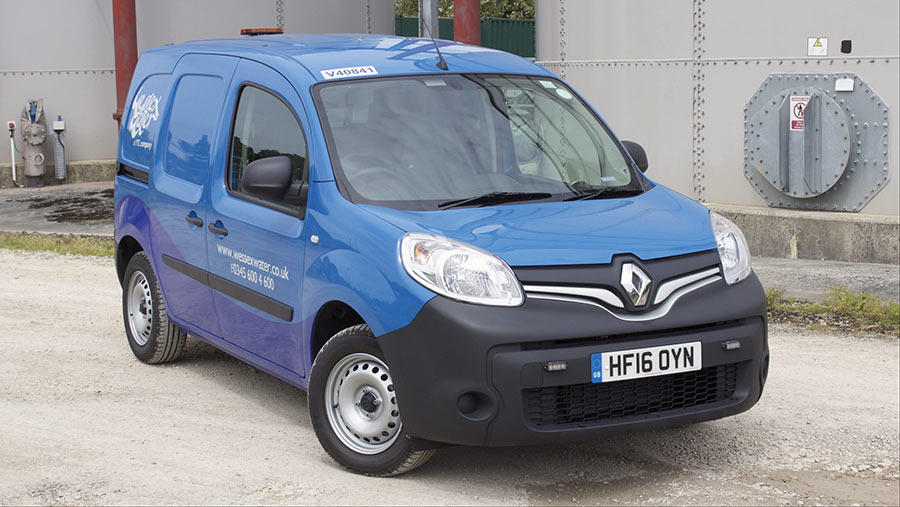
Renault Kangoo © Renault
(2013-2021) £4,000-£7,000
Production of the second-generation Kangoo, which is used as the base for the Mercedes Citan, started in 2008 and a significant facelift followed in 2013.
An all-electric Renault Kangoo ZE was also launched in 2011 and, if that’s your bag, low-mileage 2015 examples can be had for about £7,000.
The diesel-powered Kangoos have 1.5-litre 75hp, 90hp and 110hp engines paired with a five-speed manual transmission, and they can be a little noisy.
They were originally available in three lengths – Compact, Express and Maxi – but the Compact wasn’t on the market for long, as most customers opted for the standard-sized Express or long-wheelbase Maxi.
There is also a Maxi Crew Cab version that adds a second row of seats.
Unlike other rivals from the same time period, the Kangoo doesn’t get an infotainment screen and the central controls are quite basic, but there is a useful shelf in the centre of the dash.
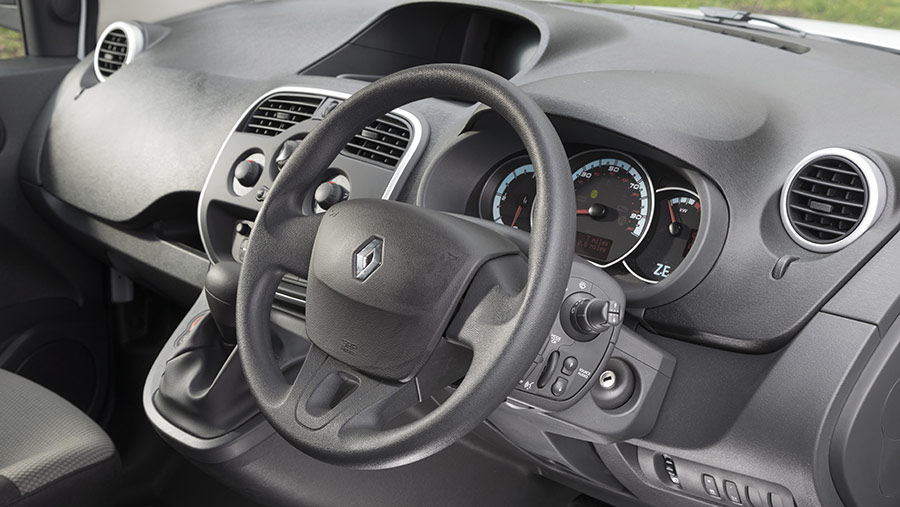
Renault Kangoo interior © Renault
It’s worth noting that the van was only available with two seats in the front, except for the twin-row crew cab.
The payload rating is good, starting at 650kg and climbing to 800kg for some models, and electronic stability control was introduced as standard in 2013.
This includes hill-start assist and Grip Xtend, which improves traction on slippery terrain.
Early facelifted versions (2013-14) are very affordable, with a good choice of sub-100,000-mile models for £4,000-£5,000.
Options remain abundant for 2016 to 2018 versions with low mileage.
These are priced between £7,000 and £8,000, but the budget shouldn’t really need to stretch this far unless you’re being particularly picky.
It’s worth noting that this generation had a 24,000-mile or two-year service interval, so don’t be alarmed if the service history looks a bit sparse.
Any vans with yearly service history are likely to have been well looked after.
What to look for
ABS recall
A small number of 2013 models were recalled for faulty ABS installation.
Before buying, check if the vehicle you’re interested in has been recalled, and ensure there is paperwork evidencing the issue was resolved by Renault.
Fuel pipe recall
About 2,500 of the 2013 models were recalled as there was a risk of the fuel pipe cover detaching and damaging the engine.
The remedy was a simple cover replacement, so make sure this has been completed.
Electronics
French electronics can be glitchy, so it’s worth testing the likely troublespots, including exterior lights, indicators and the dashboard display.
Sliding side door
Plenty of examples will have taken some tradesmen’s abuse. Check the side door runs smoothly on its tracks.
Specifications
- Engine 1.5-litre DCi
- Power 75-115hp
- Torque 200-260Nm
- Transmission Five-speed manual
- Payload 650-800kg
- Towing capacity 1,050kg
Dimensions – Express/Maxi
- Exterior length 4,282mm/4,666mm
- Max load length 1,731-2,502mm (passenger seat folded)/2,115-2,886mm (passenger seat folded)
- Max load height 1,129mm
- Max load width 1,219mm
- Width between wheel arches 1,218mm
Citroen Berlingo
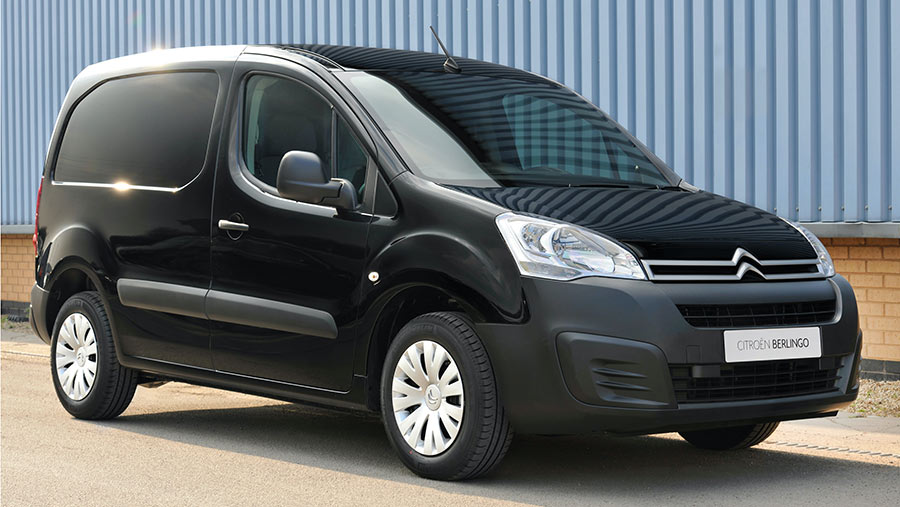
Citroen Berlingo © Citroen
(2015-2018) £5,000-£7,500
Since Citroen is part of the same group as Peugeot, the Berlingo and Partner share the same platform.
The second-generation Berlingo had some cosmetic updates in 2013 and, in 2015, gained a new line-up of more economical diesel engines.
It was available with two wheelbases – the standard-length L1 and longer L2.
On all but the entry-level L1 the passenger seat can be folded flat to maximise load length. The top-spec model gets a 7in touchscreen and upgraded DAB radio.
Unlike the Vauxhall Combo, the Berlingo doesn’t have a high-roof option, but it does have a useful payload of 552-856kg and more space between the wheel arches than the VW Caddy.
A ruck of small vans received updates in 2014 and 2015 to comply with Euro6 standards.
In the case of the Berlingo, the range comprised three 1.6-litre BlueHDi diesel engines – 75hp or 100hp with a five-speed manual gearbox, or a 120hp version with a six-speeder.
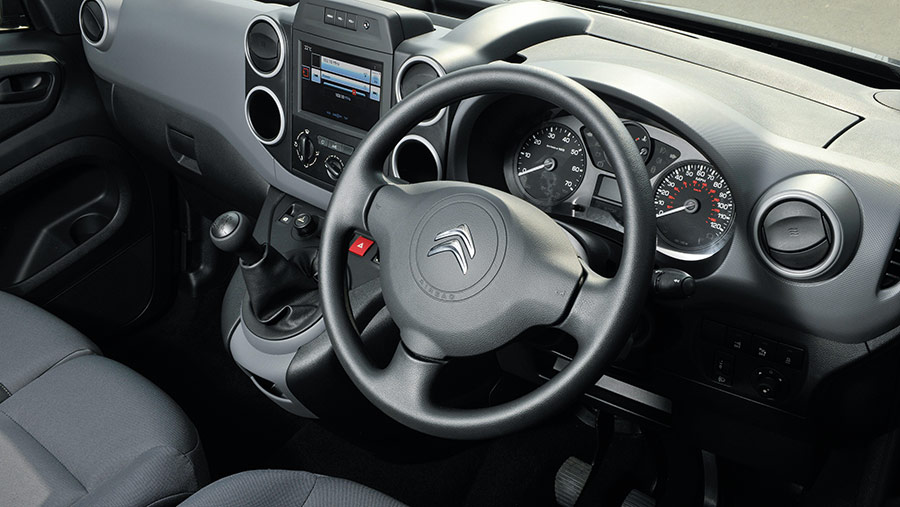
Citroen Berlingo interior © Citroen
Alternatively, there was a less popular 1.6-litre petrol that was also upgraded in 2015 to meet emission standards.
Long-wheelbase versions on 100,000 miles cost roughly £7,000, but a 2015-2017 standard-wheelbase example with the same mileage starts from £5,000.
Up the budget to £6,000 and you should find some decent 2017 and 2018 options with relatively low mileage and added extras such as air conditioning.
For better traction on slippery surfaces, Citroen offered an XTR+ model that has a limited slip differential at the front, paired with raised suspension and a sump guard.
These versions aren’t as widely available, but it’s worth looking out for one if standard two-wheel drive doesn’t cut the mustard.
What to look for
Paint
Citroen isn’t renowned for long-lasting paint, so check for any patches as this might expose the bodywork and lead to rust.
Cambelt
Citroen advises installing a new cambelt every 150,000 miles.
It’s obviously a job worth avoiding if possible, and the abundance of second-hand options means it should be relatively easy to dodge, provided you check the service history – or request a replacement before purchasing.
Airbag recall
Almost 1,000 models built in 2016 were recalled due to concerns the airbag wouldn’t deploy correctly, as the inflation device did not meeting the correct specifications.
Ensure the seller has proof the airbag module has been replaced by Citroen.
Bonnet catch
Another recall was issued for 750 vehicles that had catches deemed potentially insufficient to keep the bonnet closed.
Difficulty opening or closing the bonnet was a sign of this fault; confirm with the seller if this vehicle was recalled and fixed.
Specifications
- Engine 1.6-litre BlueHDi/1.6-litre petrol
- Power 75-120hp/96hp
- Torque 230-300Nm/150Nm
- Transmission Five- or six-speed manual, six-speed automated manual
- Payload 552-856kg
- Towing capacity 1,100-1,250kg
Dimensions – L1/ L2
- Exterior length 4,380mm/4,628mm
- Max load length 1,800mm/2,050mm
- Max load height 1,250mm
- Max load width 1,620mm
- Width between wheel arches 1,230mm
Peugeot Partner
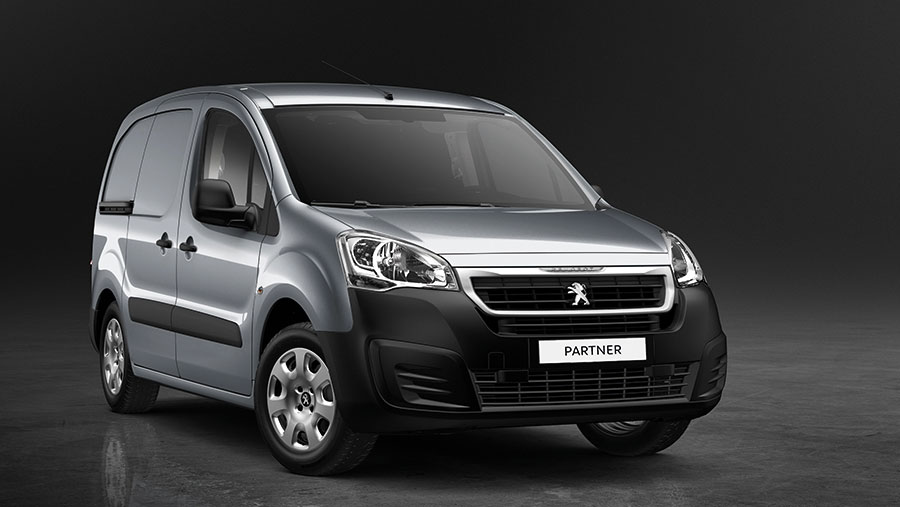
Peugeot Partner © Peugeot
(2015-2018) £4,500-£8,000
The second-generation Partner was launched in 2008 and received a significant overhaul in 2015.
It is almost identical to the Citroen Berlingo as they share the same platform – the only differences are branding and interior styling.
Like its twin, it comes in L1 and L2 wheelbases.
Some buyers might be able to save a few quid by going for a higher-spec L1 with folding passenger seat to increase load space length, rather than spending more on the more expensive, longer-wheelbase L2.
The newer Euro6-compliant 1.6-litre BlueHDi diesels have great fuel economy of more than 60mpg, with start/stop systems that turn the engine off at a standstill.
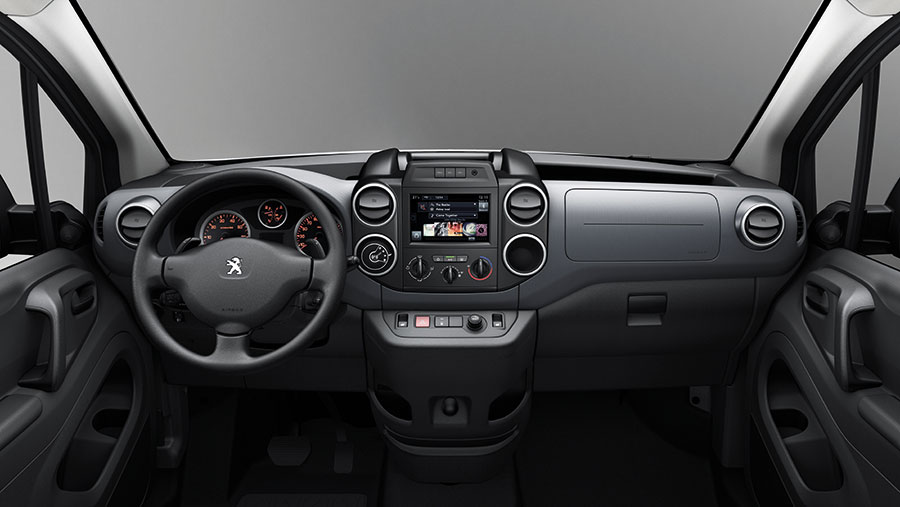
Peugeot Partner interior © Peugeot
The entry-level trim has a small digital display in the centre of the dash; fancier models have a 7in touchscreen that makes the cabin feel more modern.
It’s pretty boxy inside, but the upright dash means there is plenty of storage space on top and under the gearstick.
If you’re happy with a higher mileage example, £4,500 is a good place to start for 2016-2017 model years with about 150,000 miles on the clock.
An extra £500 opens the door to eight-year-old examples on less than 100,000 miles.
The L2 wheelbase is a bit more expensive – £7,000 is a reasonable starting point for a decent one.
What to look out for
Paint
Peugeot’s paint finish isn’t always the best. If you’re not bothered, it could help shave a bit off the asking price.
Airbag recall
Roughly 800 Partner vans made in 2016 were recalled due to concerns the driver’s airbag wouldn’t deploy correctly in the event of an accident.
Passenger seat belt recall
A recall was issued for 12,000 models built in 2018 to replace the outer passenger seat belt.
Considering the number of vehicles involved in this recall, it’s likely you’ll come across one, so check accompanying documentation to see if the seat belt was replaced.
Specifications
- Engine 1.6-litre BlueHDi/1.6-litre petrol
- Power 75-100hp/98hp
- Torque 215-250Nm/150Nm
- Transmission Five- or six-speed manual, six-speed automated manual
- Payload 552-856kg
- Towing capacity 1,100-1,250kg
Dimensions – L1/L2
- Exterior length 4,380mm/4,628mm
- Max load length 1,800mm/2,050mm
- Max load height 1,250mm
- Max load width 1,620mm
- Width between wheel arches 1,230mm
Vauxhall Combo
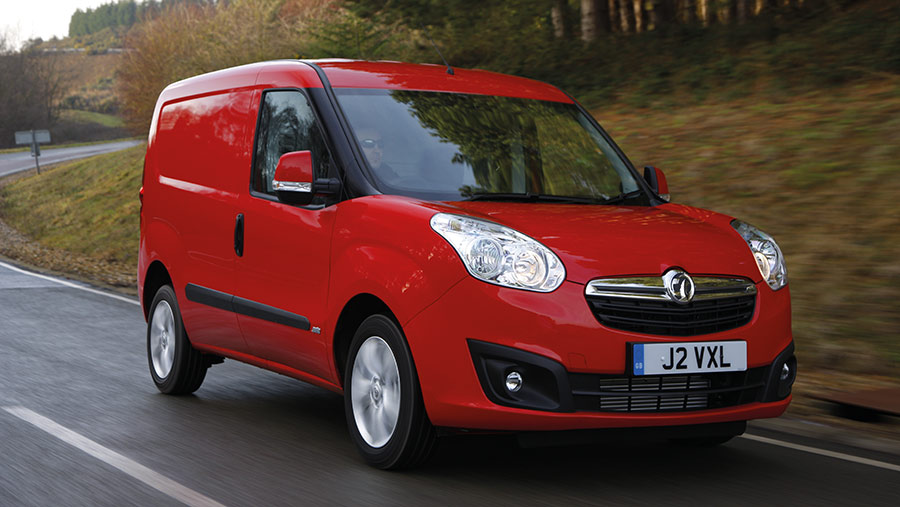
Vauxhall Combo © Vauxhall
(2012-2018) £3,000-£7,500
The third-generation Vauxhall Combo uses the Fiat Doblo Cargo platform.
The interior is quite basic – there is storage space on top of the dashboard, rather than an infotainment screen – but the Combo comes in a wide range of body style options, including a high-top H2.
The Combo also offers superior payload figures compared with other small vans of this generation.
The all-diesel engine range starts with a 1.3-litre, 90hp CDTi with 200Nm of torque, paired with a five-speed manual gearbox.
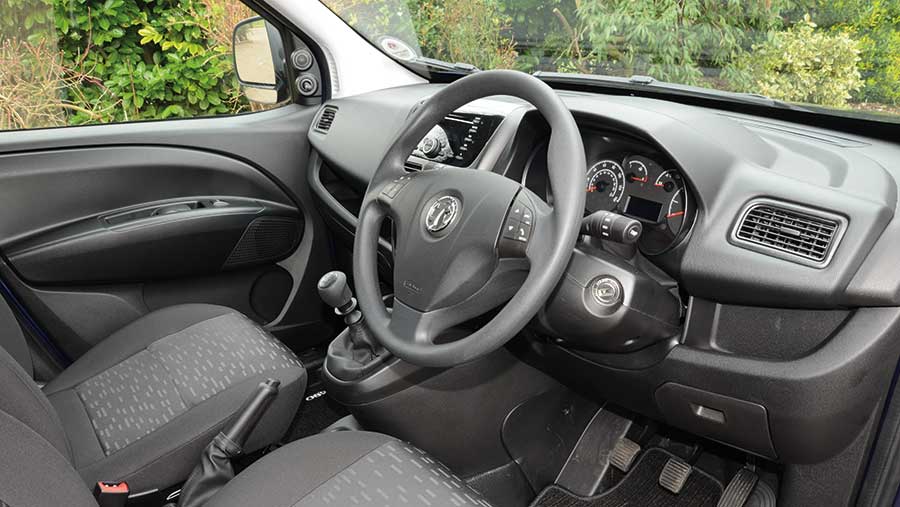
Vauxhall Combo interior © Vauxhall
Next is a 1.6-litre, good for 105hp, that gets a six-speed manual and can tow a braked trailer up to 1,300kg.
There is also a five-speed semi-automatic paired with a 90hp version of the 1.6-litre engine.
Topping the range is a 2-litre, 135hp motor that puts out 320Nm of torque.
The engines aren’t as economical as the Peugeot Partner or Citroen Berlingo, but will still reach about 50mpg.
Service intervals are every 20,000 miles or annually.
There are a number of Combos for sale on about 200,000 miles, which suggests they are pretty reliable.
If this kind of mileage doesn’t bother you, 10-year-old models are available for less than £3,000.
Push the budget to £4,500 for vans with about 100,000 miles and up to £5,500 for well-cared-for examples.
If an L2 is a must, be prepared to pay between £6,500 and £7,500.
What to look out for
Rear suspension
The Combo has a high payload for a small van, so it might have been subjected to frequent heavy loads.
Take it for a test drive to make sure the rear suspension feels settled and check MOT history for any issues.
Specifications
- Engine 1.3-litre and 1.6-litre diesel/1.4-litre petrol
- Power 95-105hp/95hp
- Torque 170-300Nm/130Nm
- Transmission Five- or six-speed manual, five-speed automated manual
- Payload 750-1,000kg
- Towing capacity 1,000-1,300kg
Dimensions – L1/L2
- Exterior length 4,390mm/4,740mm
- Max load length 1,820mm/2,170mm
- Max load height H1: 1,305mm; H2: 1,550mm
- Max load width 1,714mm
- Width between wheel arches 1,230mm
Volkswagen Caddy
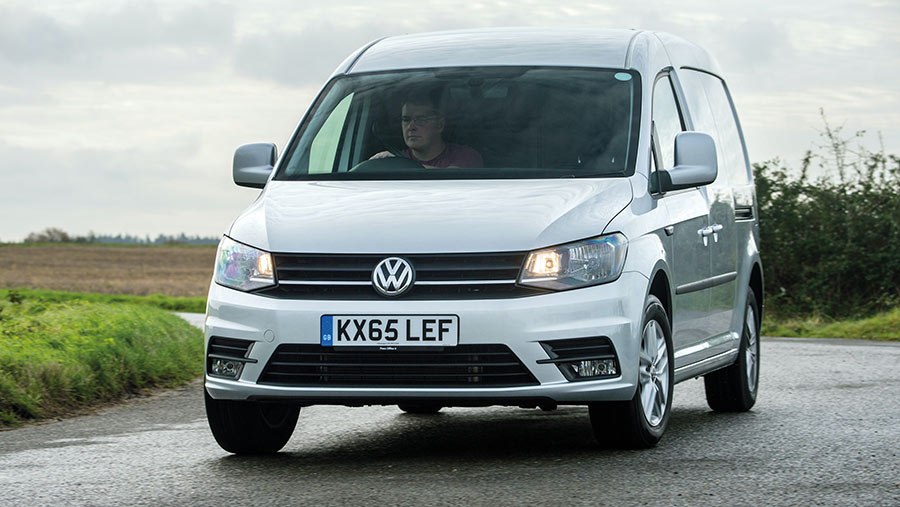
VW Caddy © Volkswagen
(2015-2020) £6,500-£8,500
Seen here in fourth-generation guise, the Volkswagen Caddy had plenty of advanced tech and safety features, including four airbags, electronic stability control and an electronic locking differential to offer better traction over slippery surfaces.
Out of our pick of used vans, the Caddy is the most upmarket, feels solidly made, and comes with a 5in or 6.5in central touchscreen.
This generation also had slightly bigger doors to make it easier to load large items.
There is a standard-wheelbase Maxi version, and a Crew Cab that adds extra seats.
Payloads are reasonable, but the entry-level model can’t carry as much as the Renault Kangoo or Vauxhall Combo.
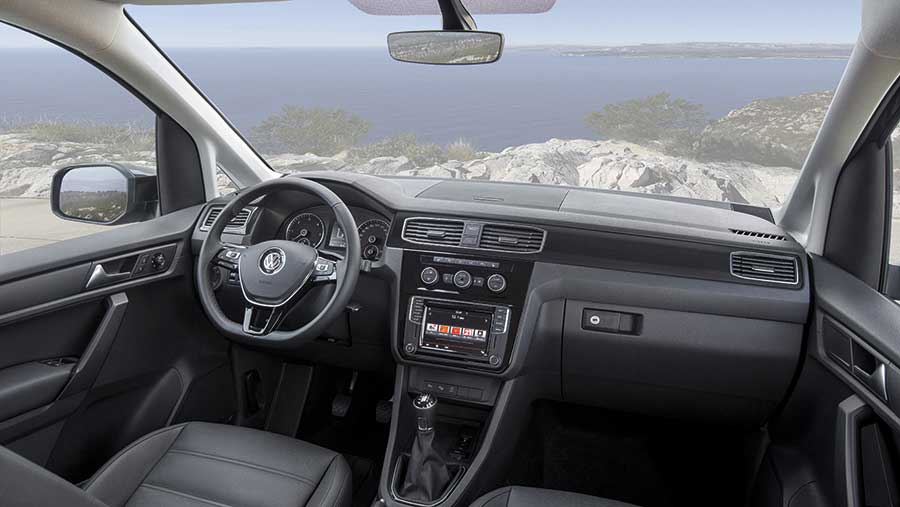
VW Caddy interior © Volkswagen
Engine options include 2-litre TDI diesels with 75hp, 102hp and 150hp, and a five-speed manual gearbox as standard.
The 102hp engine is a good place to start, offering 250Nm of torque and capable of towing braked trailers up to 1,300kg.
The Caddy also has the largest range of TSI petrol engines, with a 1.2-litre rated to 84hp, a 1-litre good for 102hp and a 1.4-litre that puts out a healthy 125hp.
Although the Caddy has just one roof height, the Maxi is marginally taller than the standard model, adding 15mm at the expense of a couple of millimetres of width.
This generation of Caddy vans holds its value particularly well. Those with less than 100,000 miles on the clock start from about £7,500; for £8,500 there’s a good selection of 2015 vans with 65,000 miles.
Limiting spend to £6,500 should still get you something on sub-125,000 miles – as as long as it has been looked after and comes with a good service history, there’s a bargain to be had.
What to look out for
Clutch
Pay attention to how the clutch feels and how the vehicle moves through the gears, even on lower mileage examples.
Load area
As the Caddy is one of the priciest van options, buyers are generally reluctant to pay over the odds when the load area has been abused.
The materials used in the rear are hard-wearing, so if there is any major damage, it’s likely the mechanicals won’t be in great shape either.
Specifications
- Engine 2-litre TDI/1-litre and 1.4-litre TSI
- Power 75-150hp/84-125hp
- Torque 225-340Nm/160-220Nm
- Transmission Five- or six-speed manual, six- or seven-speed automatic
- Payload 582-735kg
- Towing capacity 1,000-1,300kg
Dimensions – Standard/Maxi
- Exterior length 4,408mm/4,878mm
- Max load length 1,779mm/2,249mm
- Max load height 1,244mm/1,259mm
- Max load width 1,556mm/1,552mm
- Width between wheel arches 1,170mm/1,168mm

